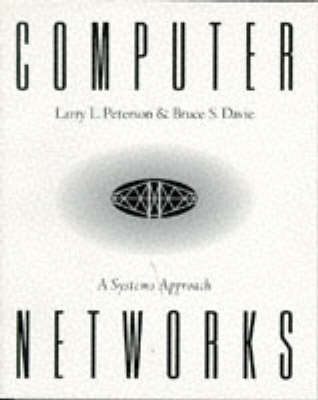The Morgan Kaufmann Series in Networking
7 total works
The newly revised edition continues to offer an enduring, practical understanding of networks and their building blocks through rich, example-based instruction. The focus is not just on the specifications comprising today’s systems but how key technologies and protocols actually work in real-world setting to solve specific problems.
The new edition features increased accessibility by clearly separating the advanced material from more fundamental via special headings and boxed features, a structure that makes it easier to teach top-down, less dependence on code to explain protocols, vastly improved ancillary package to include robust lecture slide package, and shift to higher levels in the protocol stock where the real innovation is happening currently.
the book is targeted at networking professionals and upper level undergraduate and graduate students in CS, EE, and CSE programs.
New: Unix Sockets Programming Assignments are now available for instructors
A systems-oriented view of computer network design that goes beyond current technology to instill in readers a grasp of the underlying concepts and a foundation for making sound network design decisions. By providing an understanding of the components of a network and a feel for how these components fit together to form a complete network, this book empowers readers to design real networks that are both efficient and elegant. It emphasizes network software that transforms raw hardware into richly functional, high performance network systems. Internet protocols are used as examples throughout, providing a practical and immediately relevant focus. Code fragments from the x-kernel, a working network subsystem, illustrate the concepts and demonstrate how the protocols are actually implemented.
"Computer Networks" is thoroughly innovative in both form and content. The content offers a penetrating discussion that explains - not just describes - fundamental networking principles, in practical terms relevant to real world networks of today. The form of each chapter provides the instructor with pedagogical tools that ease course preparation, and that enhance the student's learning experience.
This book begins by defining GMPLS's place in a transport network, leveraging your knowledge of MPLS to give you an understanding of this radically new control plane technology. An overview of GMPLS protocols follows, but the real focus is on what comes afterwards: in-depth examinations of the architectures underpinning GMPLS in real-world network environments and current and emerging GMPLS applications. This one-of-a-kind resource delivers immensely useful information for software architects, designers and programmers, hardware developers, system testers, and network operators--and also for managers and other decision-makers.
Wireless Networking Complete
by Pei Zheng, Larry L. Peterson, Professor Bruce S Davie, and Adrian Farrel
Individual chapters are organized into one complete reference giving a 360-degree view from our bestselling authors. From wireless application protocols, to Mesh Networks and Ad Hoc Sensor Networks, to security and survivability of wireless systems - all of the elements of wireless networking are united in a single volume. The book covers both methods of analysis and problem-solving techniques, enhancing the reader's grasp of the material and ability to implement practical solutions.
This book is essential for anyone interested in new and developing aspects of wireless network technology.
This book's comparative approach gives you something more valuable: insight into the decisions you face as you build and maintain your network, network device, or network application. Author Adrian Farrel's experience and advice will dramatically smooth your path as you work to offer improved performance and a wider range of services.



